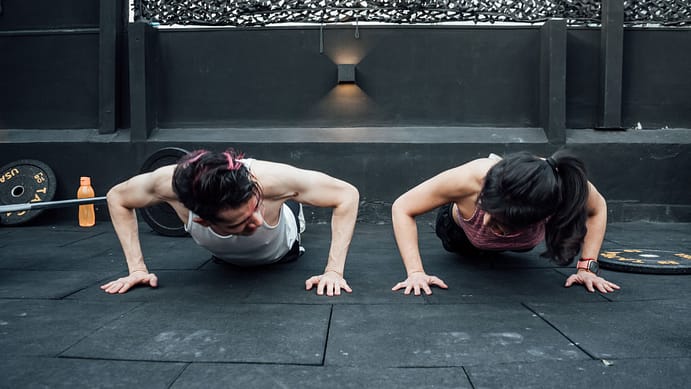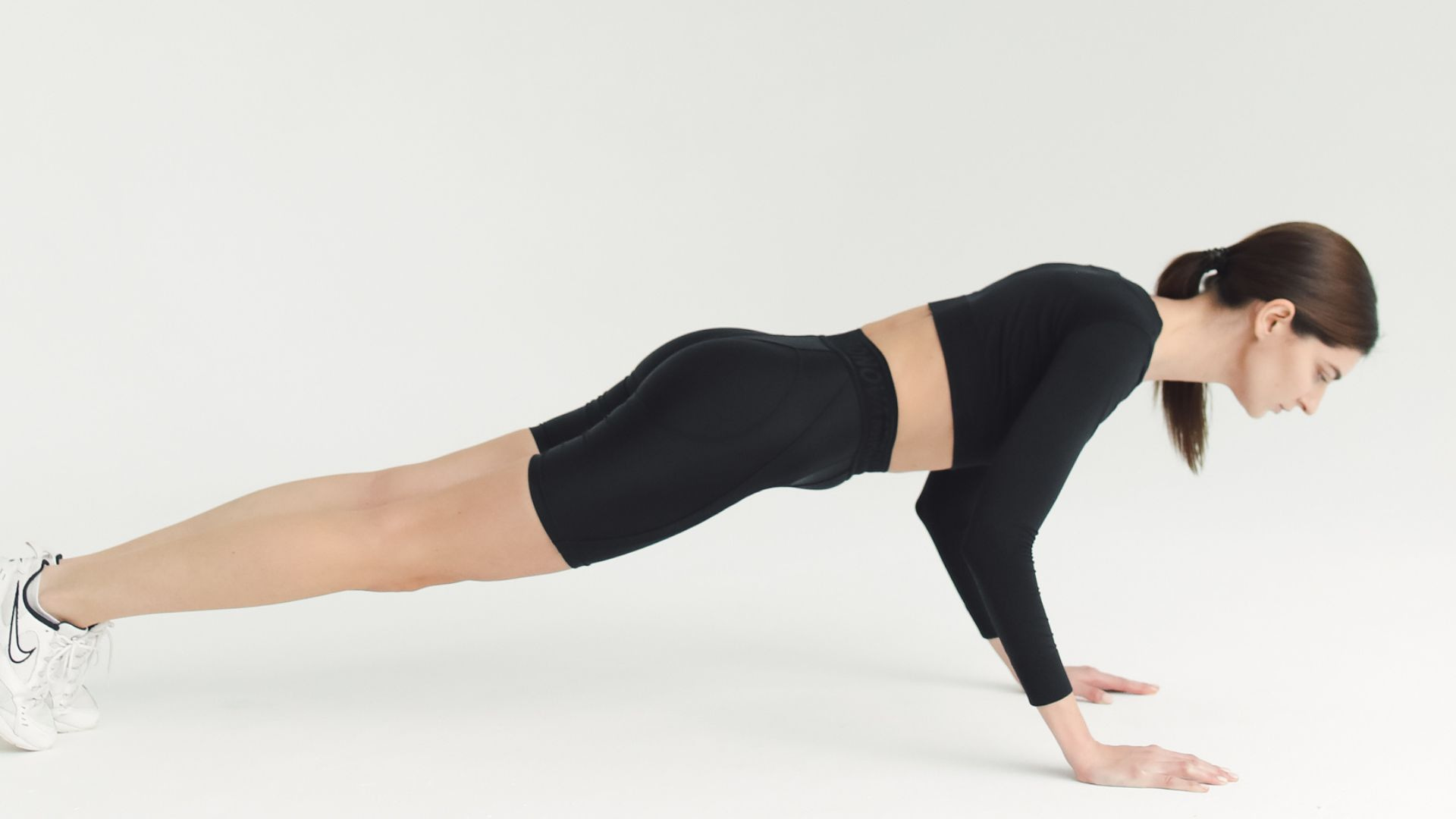Ready to get your arms and core burning? Push–ups are a great and easy way to get in shape, but how low should you go? Let‘s learn the proper form and find out!
There is no one-size-fits-all answer to how low you should go in push-ups as it can vary depending on your fitness level, strength, and mobility. However, here are five tips to help you achieve proper form while doing push-ups: keep your elbows tucked to your sides and your shoulders down and back, lower yourself until your chest touches the ground or your arms reach a 90-degree angle, keep your core engaged and your hips in line with your body, exhale as you push yourself back up to the starting position and avoid letting your lower back sag or your hips pike up towards the ceiling.
keep your elbows tucked to your sides.
When doing push-ups, keeping your elbows tucked to your sides and your shoulders down and back is important for maintaining proper form and preventing injury.
Keeping your elbows close to your body helps to engage your triceps and chest muscles more effectively, allowing you to get the most out of each push-up.
In contrast, flaring your elbows out to the sides can put undue strain on your shoulder joints, potentially leading to pain or injury.
Keeping your shoulders down and back also helps to maintain proper alignment and stability in your upper body.
This engages your shoulder blades, upper back, and chest muscles, allowing you to execute the push-up with more control and power.
keeping your elbows tucked to your sides and your shoulders down and back helps to ensure that you’re using the correct muscles and avoiding unnecessary strain on your joints.
Lower yourself until your chest touches the ground
Lowering yourself until your chest touches the ground or your arms reach a 90-degree angle is a key aspect of proper push-up form.
When performing a push-up, you want to lower your body until your chest touches the ground or your arms reach a 90-degree angle, whichever comes first.
This ensures that you’re engaging your chest, shoulders, and triceps muscles fully, working them through their full range of motion.
Lowering yourself too far can put unnecessary strain on your shoulders and lower back, while not lowering enough can limit the effectiveness of the exercise.
It’s worth noting that the depth of your push-up will depend on your individual fitness level and strength.
If you’re just starting out, it’s perfectly fine to lower yourself only a few inches before pushing back up.
As you gain strength, you can gradually work towards lowering yourself further until you reach a full range of motion.

Keep your core engaged.
Keeping your core engaged and your hips in line with your body is crucial to maintaining proper push-up form and getting the most out of the exercise.
Engaging your core helps to stabilize your body and maintain proper alignment throughout the movement.
This means keeping your abs and glutes tight, which helps to prevent your lower back from sagging or your hips from piking up towards the ceiling.
Keeping your hips in line with your body also helps to maintain proper alignment and prevent any unnecessary strain on your lower back.
Your body should form a straight line from your head to your heels, and your hips should not be higher or lower than your shoulders.
By keeping your core engaged and your hips in line with your body, you’ll be able to execute the push-up with greater control and stability, engaging all of the muscles in your upper body and core for a more effective workout.
Exhale as you push yourself back up.
Exhaling as you push yourself back up to the starting position is an important aspect of proper push-up form.
When you exhale, you engage your core muscles and activate your diaphragm, which helps to stabilize your body and provide extra power as you push yourself back up.
Exhaling also helps to regulate your breathing and prevent you from holding your breath, which can increase tension and make the exercise more difficult.
As you lower yourself down into the push-up, inhale deeply and hold your breath briefly at the bottom of the movement.
As you push yourself back up, exhale forcefully through your mouth, engaging your core and using the power of your breath to help you complete the movement.
By incorporating proper breathing techniques into your push-up routine, you’ll be able to execute the exercise more effectively and get the most out of your workout.
Avoid letting your lower back sag.
Avoiding letting your lower back sag or your hips pike up towards the ceiling is essential for maintaining proper push-up form and avoiding injury.
When your lower back sags or your hips pike up, you put unnecessary strain on your spine and increase the risk of lower back pain or injury.
Additionally, this can make the exercise less effective by taking the focus off of the target muscles and placing it on other areas of the body.
To prevent your lower back from sagging, engage your core muscles by tightening your abs and glutes. This will help to keep your body in a straight line from your head to your heels.
To avoid piking your hips up towards the ceiling, focus on keeping your shoulders directly above your hands and your hips level with the rest of your body.
Imagine that you’re holding a plank position and keep your body as stable and straight as possible.
By maintaining proper alignment and avoiding letting your lower back sag or your hips pike up, you’ll be able to perform push-ups more effectively and safely, and get the most out of your workout.
Note:
However, in general, a full range of motion in a push-up involves lowering the body until the chest touches or comes close to touching the ground, and then pushing back up to the starting position. This allows for maximal activation of the chest, triceps, and shoulder muscles.
It’s important to note that while a full range of motion can be beneficial for building strength and muscle, it may not be appropriate or safe for everyone. Individuals with shoulder or wrist injuries or limitations in their range of motion may need to modify the exercise to avoid pain or discomfort.
Ultimately, the range of motion in a push-up should be tailored to an individual’s abilities and goals, and should be performed with proper form and technique to maximize the benefits and minimize the risk of injury.
1. Starting Position
- Hands slightly wider than shoulder-width apart and feet together
- Engage your core
- Maintain a neutral spine
2. Lowering
- Lower your body until your chest is about an inch off the ground
- Keep elbows close to your body and pointed slightly back as you lower yourself
3. Pushing Up
- Push back up to the starting position, fully extending your arms at the top
- Avoid sagging your hips or raising your butt too high
4. Breathing
- Breathe deeply and consistently throughout the exercise
5. Repetitions
- Repeat for desired number of repetitions
6. Modifications
- Start with modified push-ups, if needed
- Consult with a fitness professional for personalized guidance, if needed
7. Benefits
- Maximize activation of the chest, triceps, and shoulder muscles
- Build strength and muscle
8. Risks
- Risk of injury
- Pain or discomfort
9. Proper Form
- Proper form and technique is essential
10. Individual Factors
- Fitness level
- Range of motion
- Goals
Here’s a general guideline chart table for performing push-ups with proper form:
Step |
Instructions |
|---|---|
| 1 | Start in a high plank position with your hands slightly wider than shoulder-width apart and your feet together. |
| 2 | Engage your core and lower your body until your chest is about an inch off the ground. |
| 3 | Keep your elbows close to your body and pointed slightly back as you lower yourself. |
| 4 | Push back up to the starting position, fully extending your arms at the top. |
| 5 | Repeat for desired number of repetitions. |
It’s important to maintain a neutral spine and avoid sagging your hips or raising your butt too high. Also, make sure to breathe deeply and consistently throughout the exercise.
If you’re new to push-ups or have any limitations, start with modified push-ups or consult with a fitness professional for personalized guidance. Remember, proper form and technique are essential to maximize the benefits and minimize the risk of injury.
Do push-ups the right way -video related here ^ ^
Conclusion
It is important to work within your own ability level when doing push–ups and to build up your strength before attempting more challenging variations or increasing the number of reps. It is best to listen to your body to determine the number of push–ups that is best for you.
Sources:


